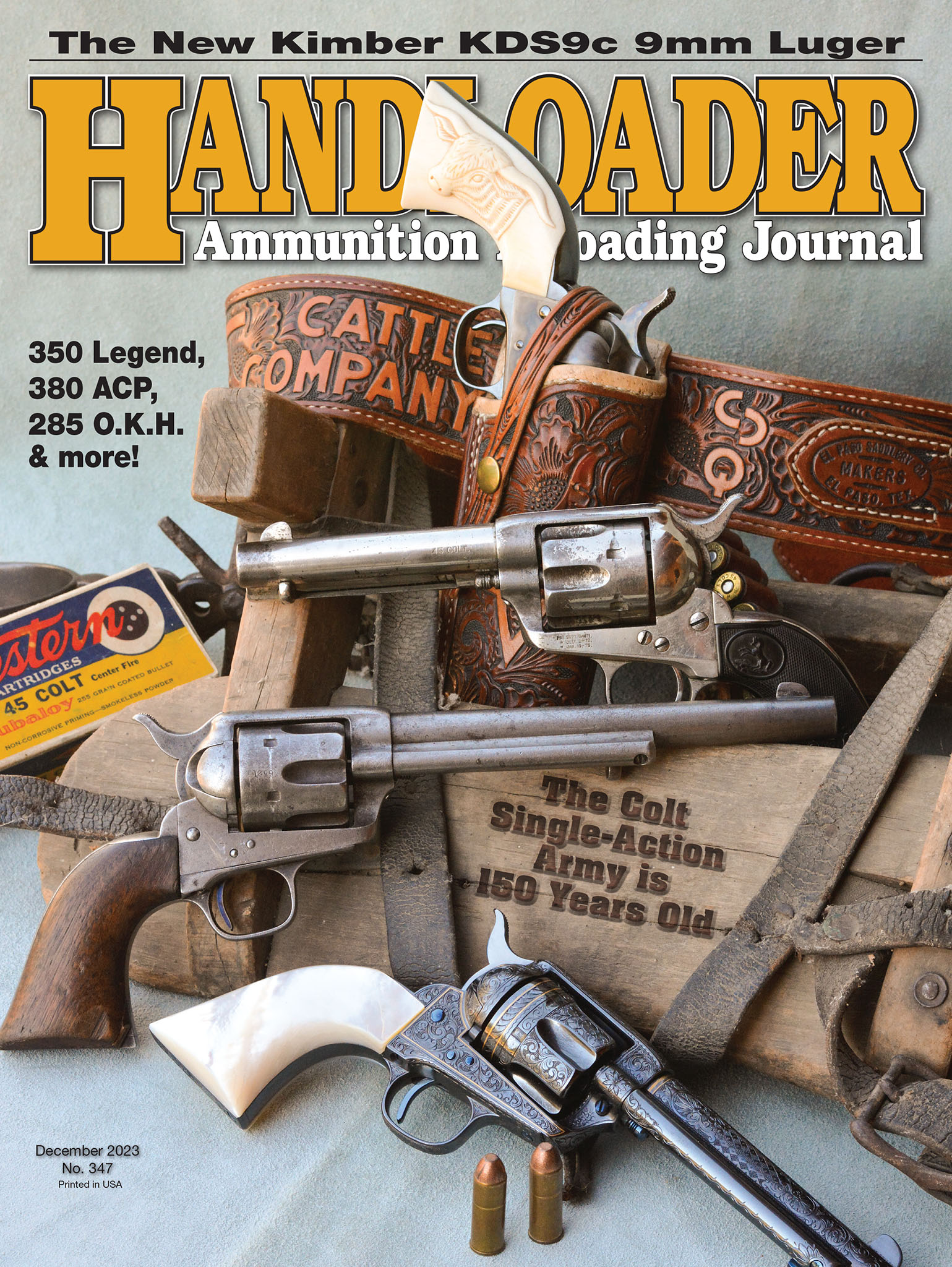Bullets & Brass
Starline 45 Auto +P Versus 45 Auto
column By: Brian Pearce | December, 23
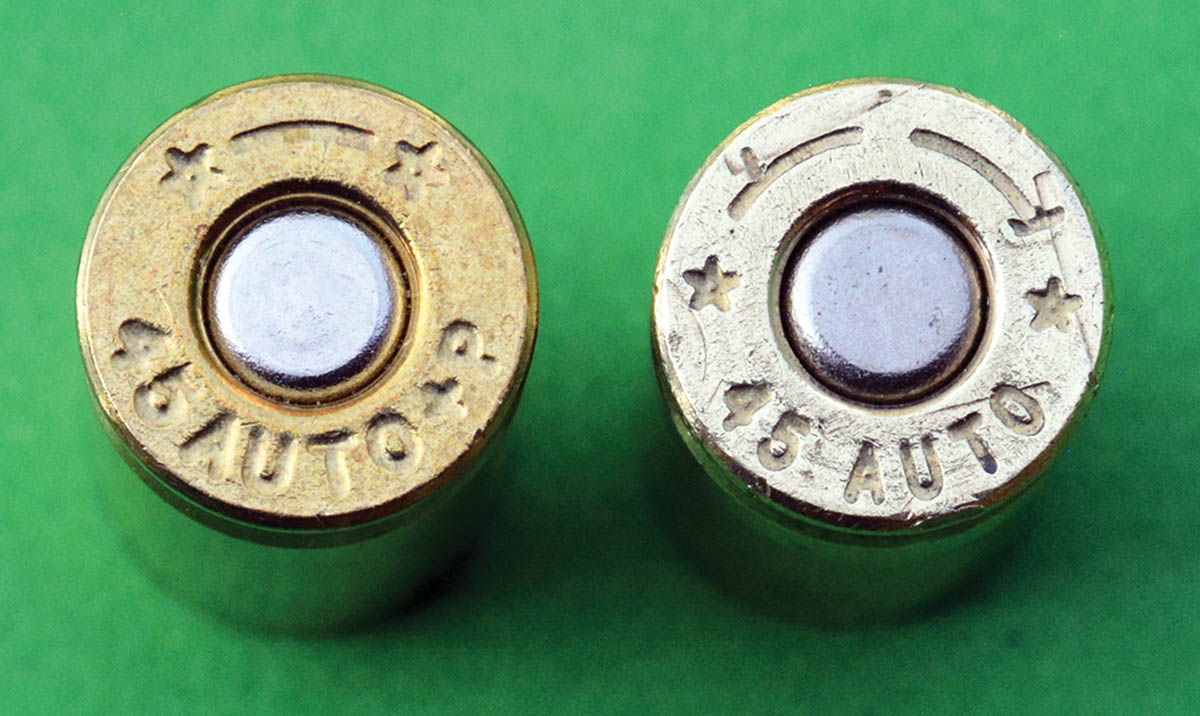
Starline 45 Auto +P Cases Correction
In Handloader No. 345 (August – September 2023), in my “Bullets & Brass” Column, I indicated that 45 Auto +P brass and standard 45 Auto brass from Starline are the same other than the headstamp that is for load identification purposes. This statement was based on information provided by Starline many years ago to this writer, but was also confirmed by weighing cases, etc. However, after that issue of Handloader was received by Hunter Pilant, process manager and chief ballistician at Starline, he contacted me with this response. “While our 9mm Luger and 38 Special are no different than other +P variants, the 45 Auto and 38 Super do differ from the +P variants. Both the 45 Auto +P and 38 Super +P are made out of heavier cups so that we can hit the head harder in the heading process to get a stronger case head. The 45 Auto +P also has a little thicker sidewall at the base than our standard 45 Auto.”
This is useful information and important to know when handloading these two cartridges. As Hunter indicated, this serves to increase case strength, which makes them ideal choices for +P pressure handloads. Handloaders should also note that +P cases in 45 Auto and 38 Super will have slightly less capacity than their non-+P counterparts, which can result in increased pressure when compared with the same load in a standard case.
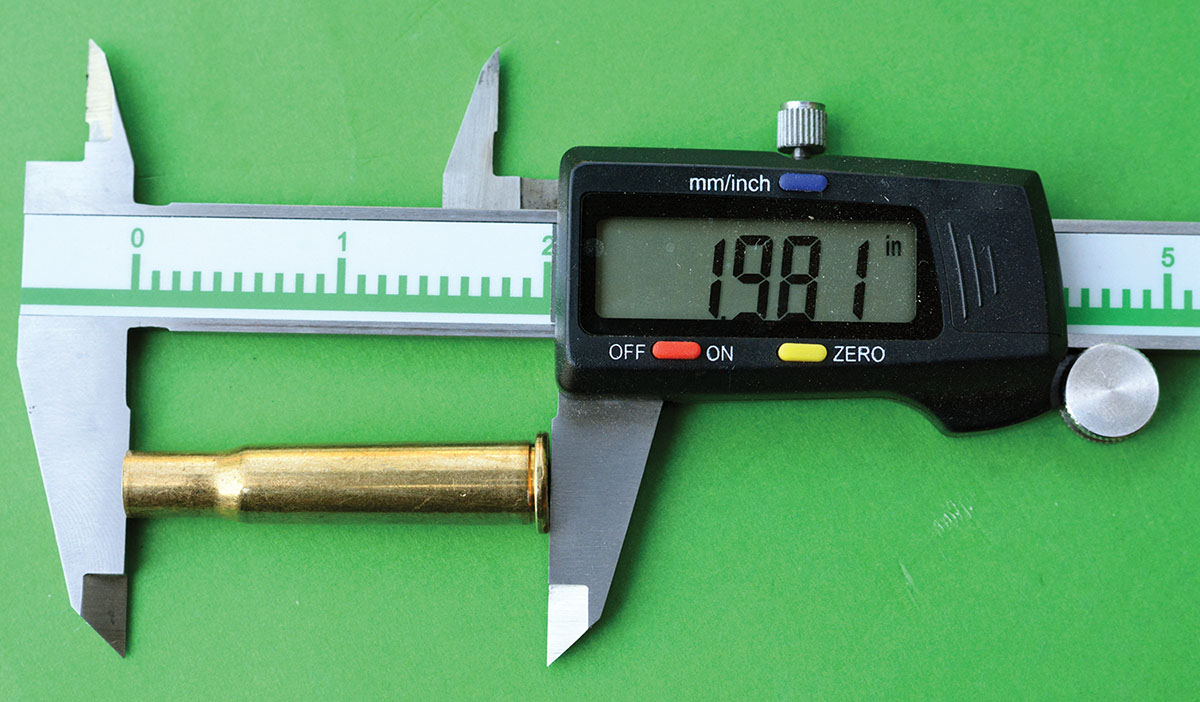
Winchester Model 1894 Handloads
Q: I have several Winchester Model 1894 Saddle Ring Carbines and rifles that I have collected over the years. But I also enjoy shooting them. With concerns over wearing out their “Nickel Steel” barrels prematurely, I decided to begin using cast bullets. I purchased commercial cast bullets from Lyman mould No. 311041 that weigh 173 grains. I am using 21 grains of IMR-4198 powder (a load that I got from you), which is really accurate. Bullets are roll crimped in their beveled crimp groove and the overall cartridge length is around 2.510 inches.
The problem that I am having is that my loaded rounds are difficult to chamber in some rifles. It occurs just as the lever is almost fully closed. I can apply a little bit of pressure and the lever then closes and the cartridge fires without issue. This only occurs with some of my rifles.
I have a late 1920s rifle, two saddle ring carbines and a post ’64 carbine that each chamber these cartridges just fine. But about half of my guns engage the front driving band as cartridges are chambered. I have made certain that I am full-length sizing cases and bullets are sized to .309 inch.
I have two basic questions. First, is there any danger or problems in firing these cartridges? Second, if there is a problem, what can I do to fix it? Thanks for your help. Keep those enjoyable articles coming.
R.K., via Facebook
A: The Lyman No. 311041 is a great bullet for the 30-30 Winchester; however, its full caliber front band can contact the leade in rifles with a shorter leade. This is probably why your handloads are not chambering properly in some rifles, but are working in others. Considering your modest pressure loads, firing them in rifles wherein they contact the leade will not hurt anything.
There are not many practical options to correct the problem. The offending rifle’s chamber leade can be lengthened, but that would be fairly costly and neither would I recommend modifying vintage rifles in that manner. A practical approach would be to shorten cases by around .050 to .060 inch or to 1.989 inches and then seat and crimp bullets in the normal method. If you choose to use ammunition with full-length cases after firing the above short case loads, it is suggested to clean the chamber first.
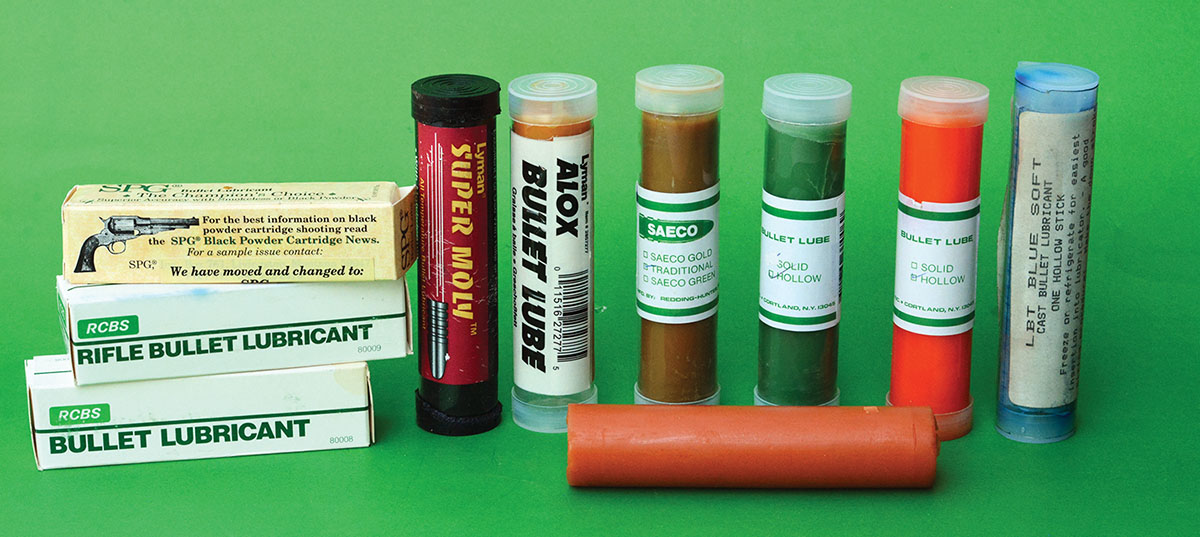
Cast Bullet Lube
Q: I have been shooting for about 30 years. I thought that I knew a lot about guns and ammunition, but about 5 years ago I started handloading. It was only then that I realized how little I actually knew about guns and ammunition. Now, I wish that I would have started handloading 30 years ago. My compliments for publishing an outstanding publication, as there is nothing else that even comes close to Handloader!
After reading your articles in Handloader and the respect that you have for cast bullets in handguns, I purchased a variety of commercial offerings from Rim Rock, Matt’s Bullets and Montana Bullet Works. Being very happy with their performance, I recently added casting equipment to my reloading bench and have bought several bullet moulds.
I have cast a fair number of bullets for 38 Special, 41 Magnum, 44 Special, 44 Magnum 45 ACP, 45 Colt and 454 Casull, but have not sized them or applied the lube. The problem that I have is in choosing the best lubricant. I have read up on the subject, but I have found so many varying opinions that I’m pretty confused. Even looking at the lube contained in the commercial cast bullets varies significantly.
My magnum revolver cartridges will generally be loaded with full-power loads and the bullet moulds that I have purchased for them all feature a gas check. The 38 Special, 44 Special 45 Auto and 45 Colt will be loaded to similar velocities as factory loads and the bullets for those are all plain base designs. Is there one lube that will work with all loads, or do I need a different lube for the standard cartridges and a different lube for the magnum rounds?
T.L., Phoenix, AZ
A: To give a truly proper response to your question would take much more space than is available here, so my comments must be somewhat general.
First, regarding your magnum calibers; generally the higher the velocity, the greater viscosity the bullet lube needs to offer. For that matter, bullets with generous-sized grease grooves will further serve to prevent barrel leading. For magnum sixgun cartridges, the old Alox NRA bullet lube formula is a standard if you will. There are many other bullet lubes that offer more or less similar performance, but again that would take considerable space to discuss. Alox is offered by many companies including Lyman, Javelina, Lee Precision, RCBS, Redding and several other companies. The drawback with Alox is that it can cause fouling and buildup in the revolvers cylinder window and surrounding area that can cause cylinder rotation issues. This is not generally a problem with most magnum revolvers, as they are not typically fired 300 to 500 rounds in a session and it cleans up easily. Plus, freshly lubricated bullets should be stood up and organized to prevent this soft, sticky lube from sticking to other bullets. (Incidentally, Midway USA offers a powder agent that can be dusted onto bullets to help minimize this sticking.)
Now with that said, by choosing moulds with a gas check design for your magnum revolvers, the importance of high-viscosity bullet lube is somewhat reduced. In other words, you can use a lube with lower viscosity and performance will still be respectable.
Regarding your standard velocity 38, 44 Special and 45 Colt revolver cartridges and 45 ACP pistol, they do not require as much viscosity to work properly. I really wish that I had more space to elaborate, but in short, the hard lubes that require heating to flow through lubri-sizers, such as Lyman’s Orange Magic, can work very well. Once that lube is placed in the bullets lube grooves, it hardens and bullets can be bulk packed, which explains why it is so popular with commercial cast bullet companies and consumers.
These lubes are especially popular wiThese lubes are especially popular with high volume pistol shooters, cowboy action shooters, etc., as they offer minimal fouling in the action (including pistols and revolvers), allow more rounds to be fired between cleanings and they generally produce less smoke. But for optimal accuracy and overall performance, especially in sixguns, soft lubes that are designed specifically for standard velocities are generally preferred. Examples include Saeco Gold, Saeco Green, Lyman Ideal, SPG and similar lubes. There will be some personal preference, but those basic guidelines should help you make your choice.
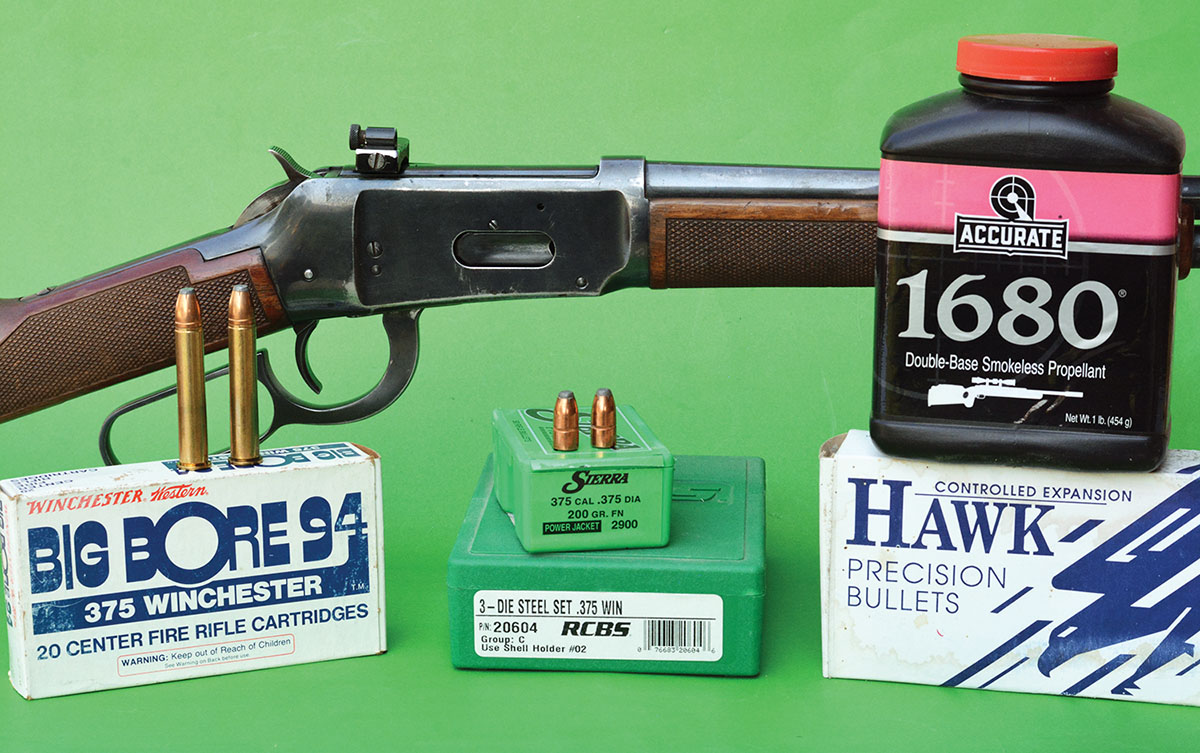
375 Winchester Handloads
Q: I am having two problems with my 375 Winchester handloads and am hoping that you can offer insight. I have two rifles; an original Winchester Model 94 Big Bore made in 1979, and a Marlin Model 375, made during the early 1980s. I am using both Winchester and Starline cases. I am using the Hornady 220-grain Interlock flatpoint bullet with 36 grains of IMR-4198 powder. Is there a powder that will give me greater velocity? Using the Winchester cases, the cases are difficult to extract from the Winchester Model 94, but that load works fine in the Marlin 375. The second problem is that loads assembled in the Winchester cases try to feed two cartridges at once, which jams the carrier. When this occurs, I have to remove the magazine tube to clear the jamb. This never occurs using the Starline cases.
I was sorry to learn that Hornady recently discontinued its .375 caliber 220-grain Interlock flatpoint bullet, which has given great performance on deer, black bear and wild hogs. My supply is running low. I always felt that the original Winchester bullets were too light at 200 grains, but admittedly they work great on deer. The 250-grain bullets have failed to expand due to their low muzzle velocities. Regardless, I have not been able to buy either Winchester bullet for many years. Are you aware of anyone that makes a good 220-grain bullet that is suitable for hunting?
J.T. - Scottsbluff, NE
A: The load that you are using is approximately 3 to 4 grains over maximum, which explains the sticky extraction that you are experiencing in the Winchester 94. I would suggest reducing that load to 32-33 grains maximum with IMR-4198 powder for around 2,100 to 2,150 fps respectively, which should correct your sticky extraction problem. This load offers notable accuracy; however, if you want a bit more velocity, try 41 grains of Accurate 1680 powder for around 2,325 fps.
Based on the sample cases that you forwarded, it seems the Winchester cases are running about .010 to .013 inch smaller than SAAMI specifications for rim diameter. I suspect that you have a lot number of cases that are slightly out-of-specification, as this is not a normal occurrence. Regardless, it appears that cartridges are getting past the magazine cartridge stop associated with the link, which is causing the jamming issue in your Winchester. I don’t believe that your gun has an issue. Since you have Starline cases, stick with those (especially in the Winchester rifle), which will solve that problem.
Regarding jacketed hunting bullets, Hawk Precision Bullets offers 180-, 200-, 220- and 250-grain versions all with .025-inch thick jackets for reliable expansion at normal velocities. Northern Precision tells me that they can also make 220-grain bonded bullets, but also offer all practical bullet weights for the 375 Winchester. Since Winchester has not been offering bullets as a component for several years, note that Sierra still lists the 200-grain Pro-Hunter FN bullet.


